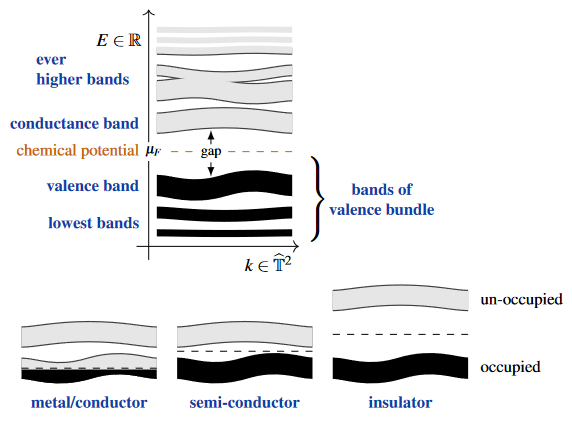nLab conductor (electromagnetism)
Redirected from "insulators".
Note: insulator and conductor (electromagnetism) both redirect for "insulators".
Note: insulator and conductor (electromagnetism) both redirect for "insulators".
Context
Solid state physics
-
basics
-
Examples
Contents
Idea
In solid state physics a conductor is a crystalline material for which the chemical potential of the electrons lies inside an energy band, then called the conduction band. (If it lies instead in an energy gap between bands one speaks of an insulator or of a semi-conductor if the gap is small.)
This situation implies that any quantum of energy is sufficient for exciting the electron quantum states, and hence that they easily carry electric charge in response to an electric potential (cf. Ohm's law).
 (graphics from SS 22)
(graphics from SS 22)
Related concepts
Literature
See also
- Wikipedia, Electrical conductor
Created on January 12, 2025 at 12:45:42. See the history of this page for a list of all contributions to it.